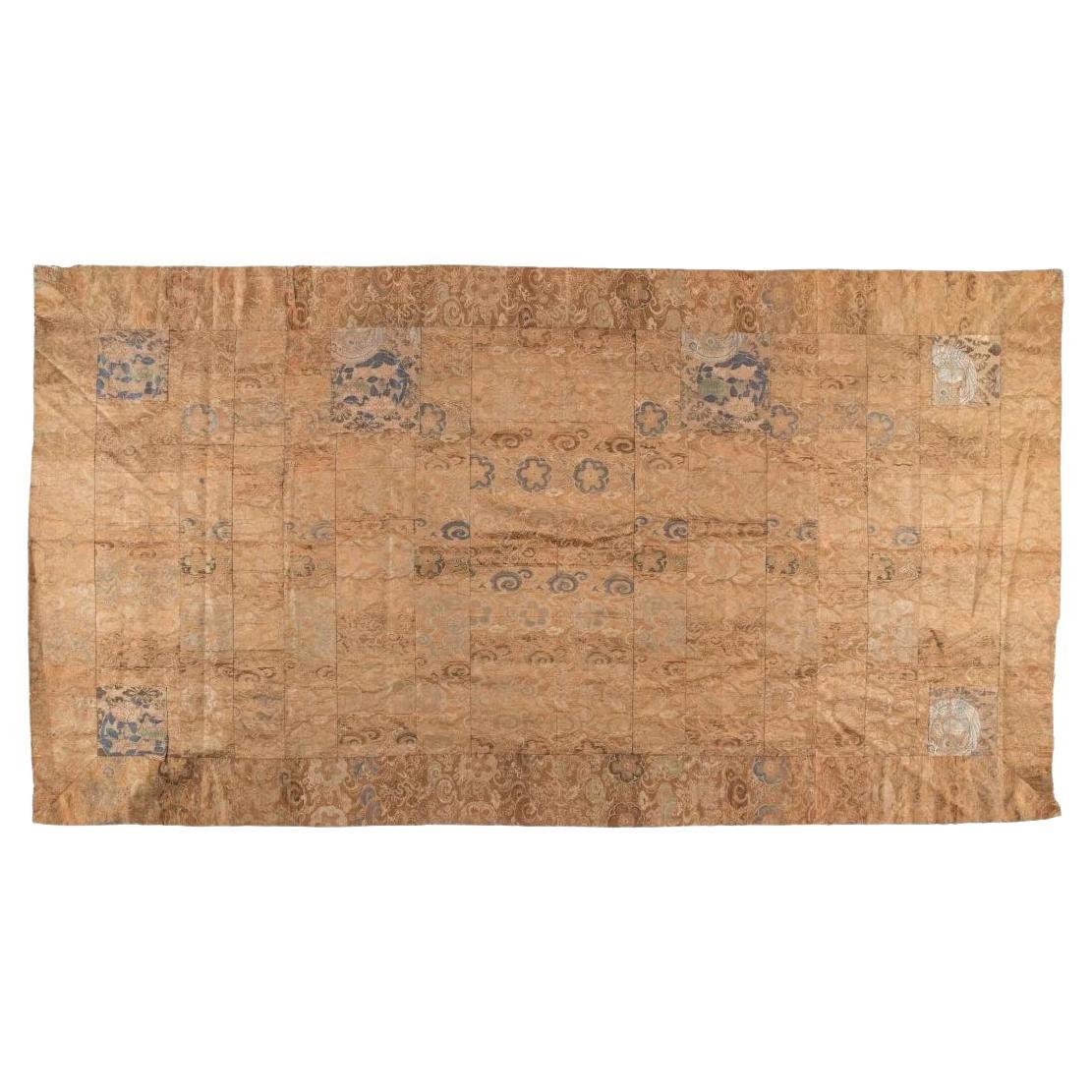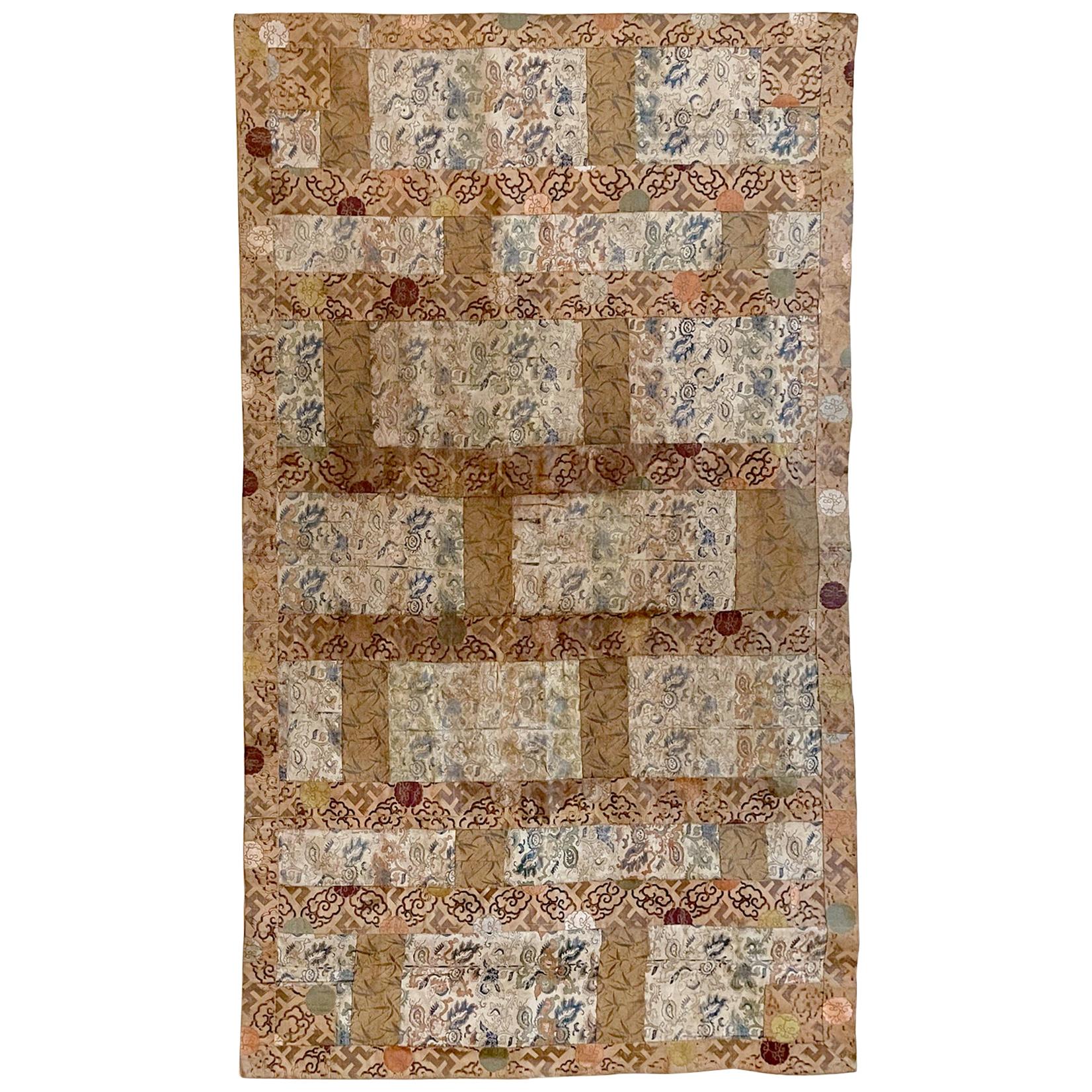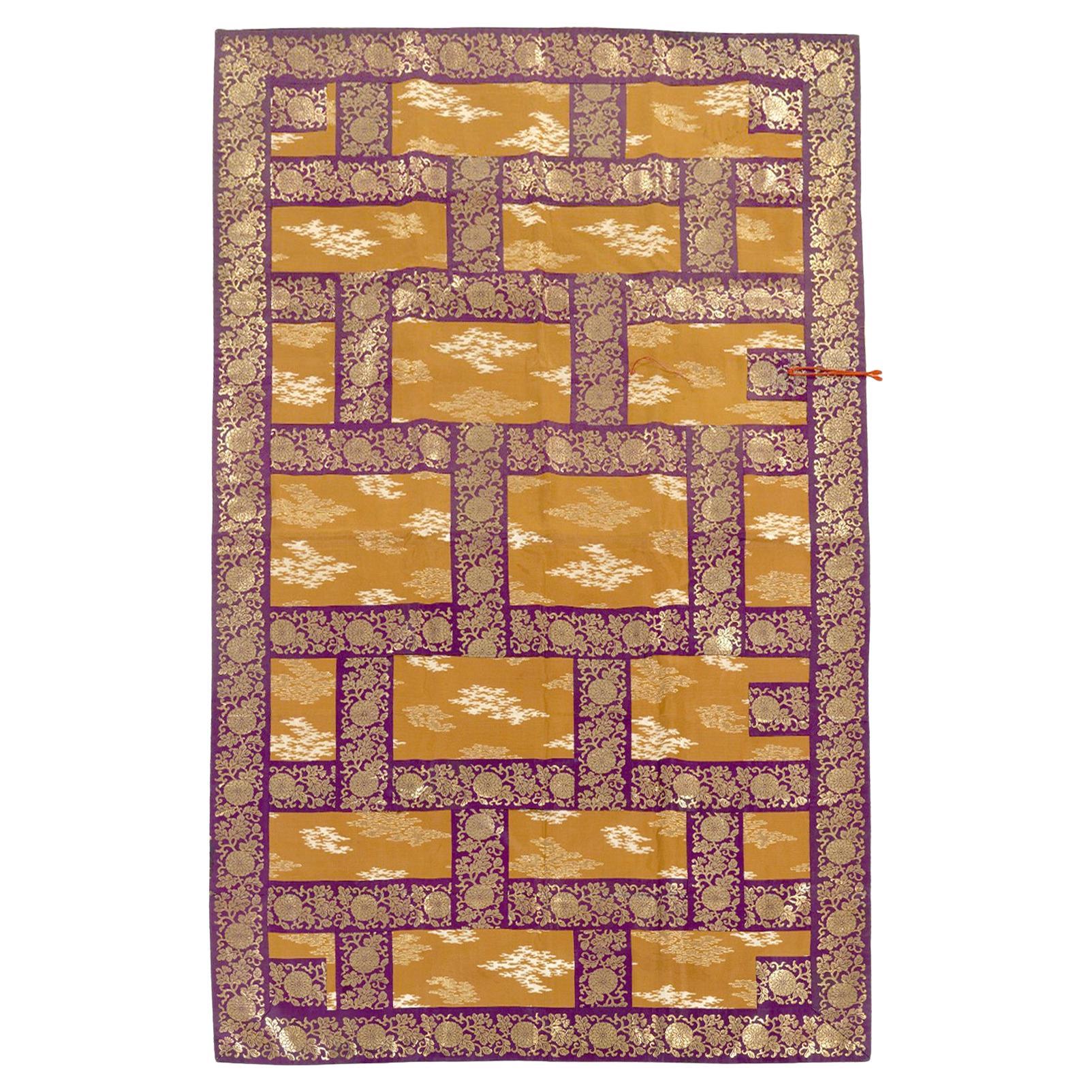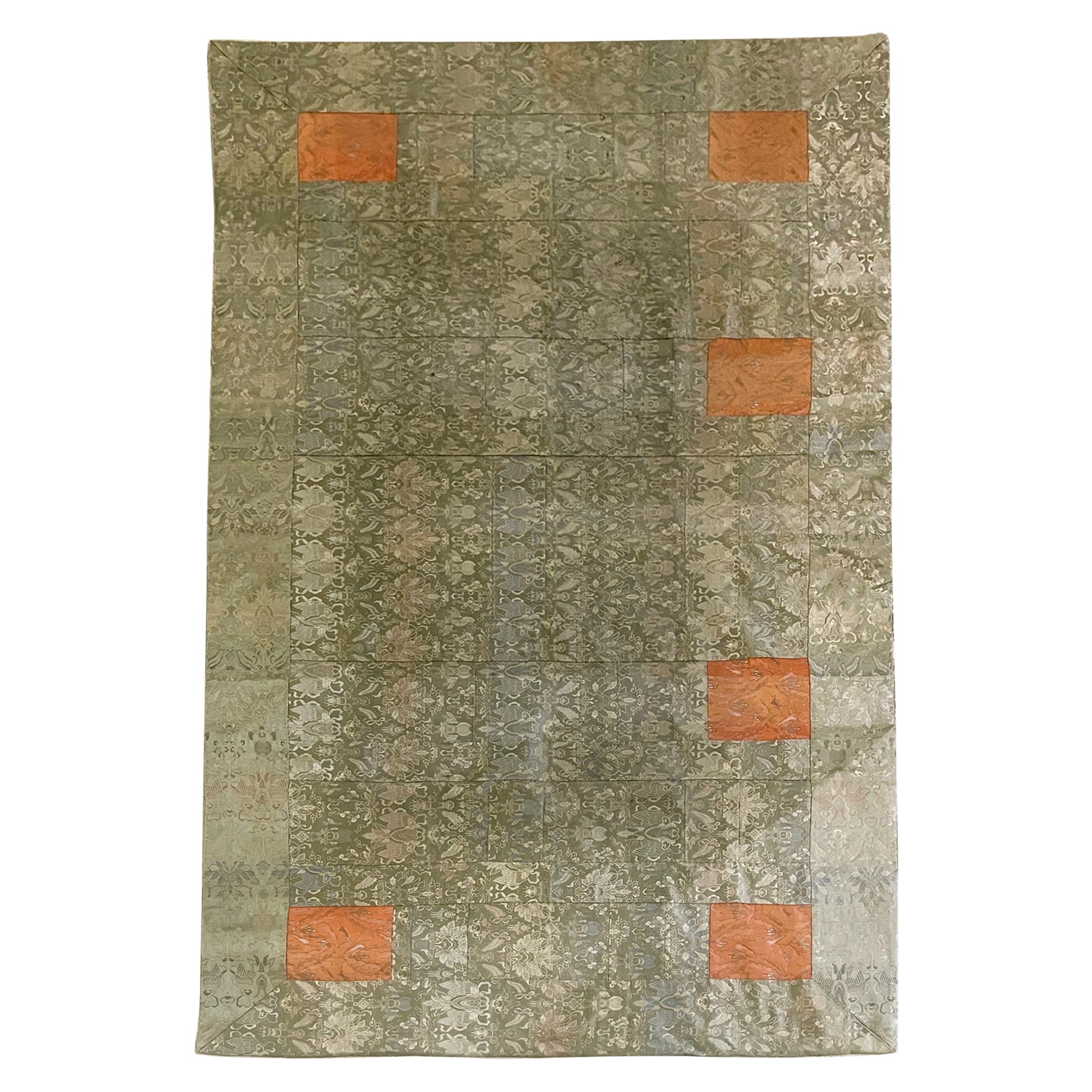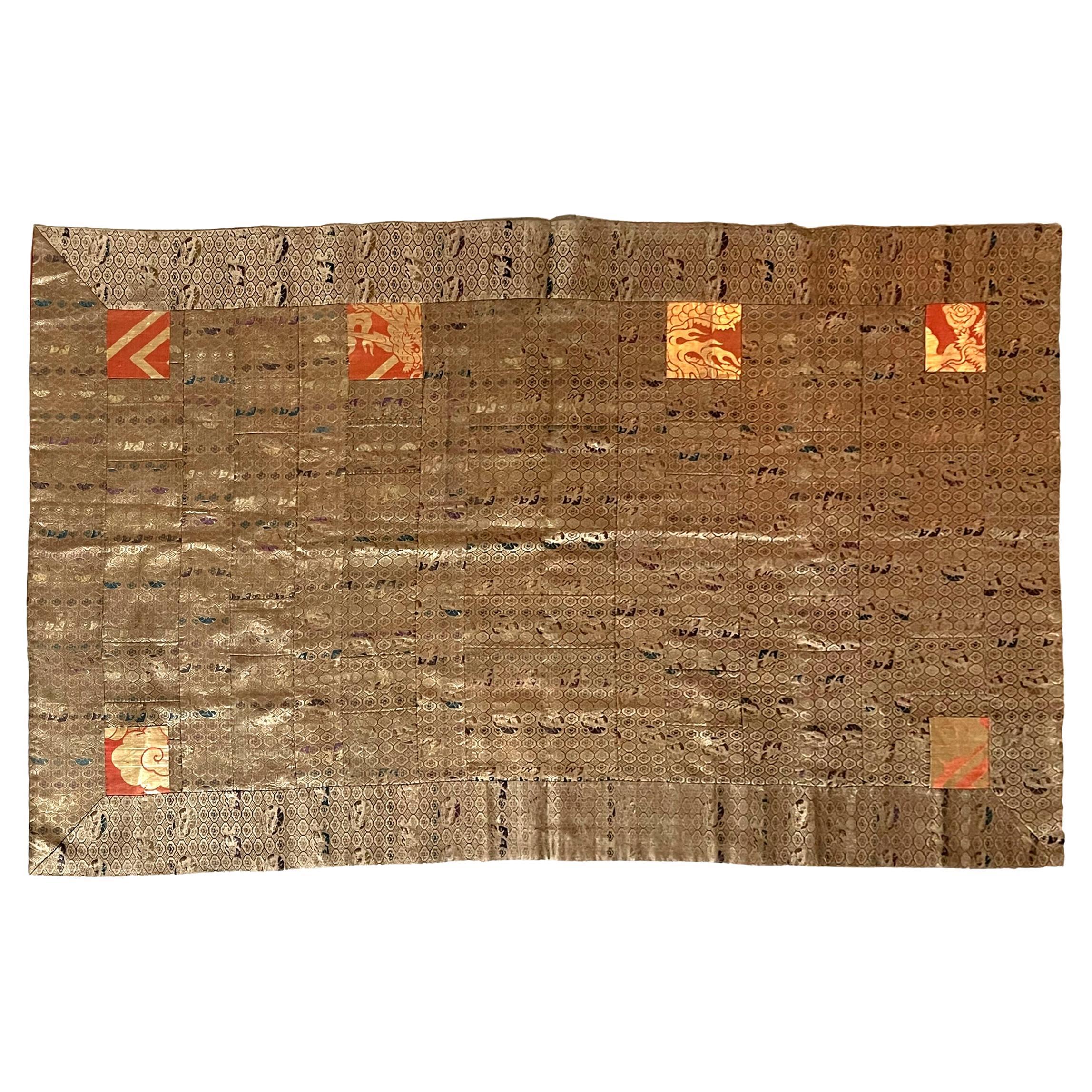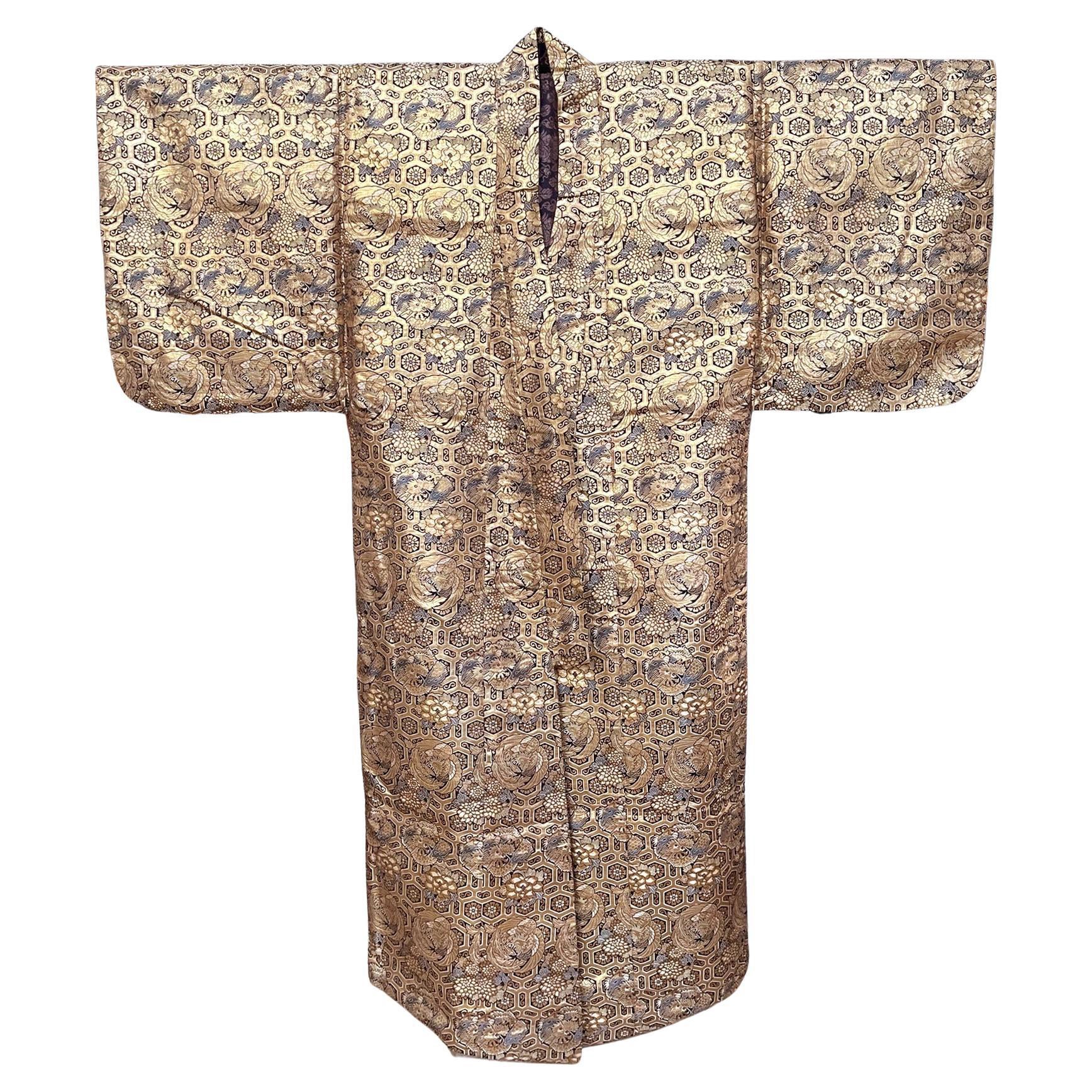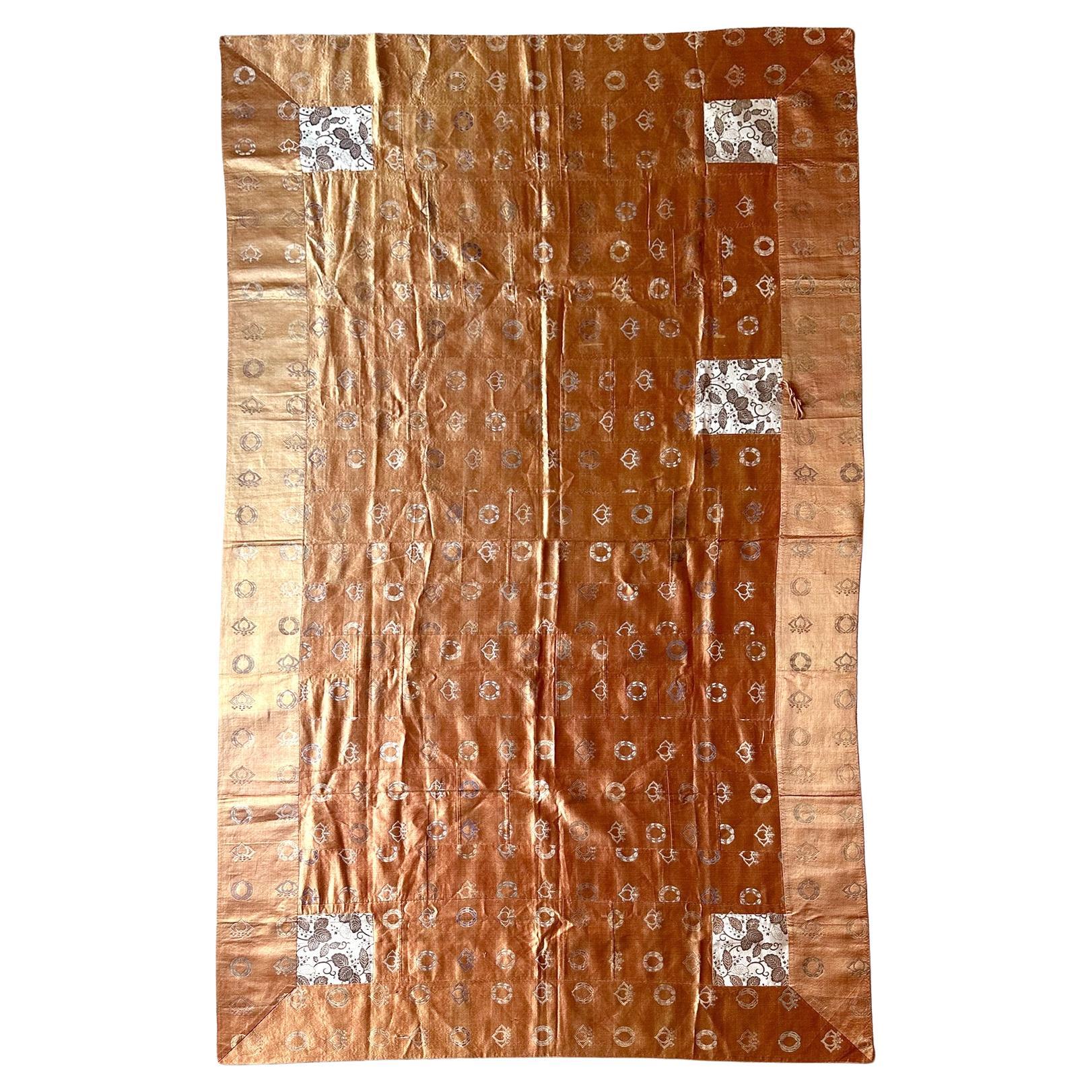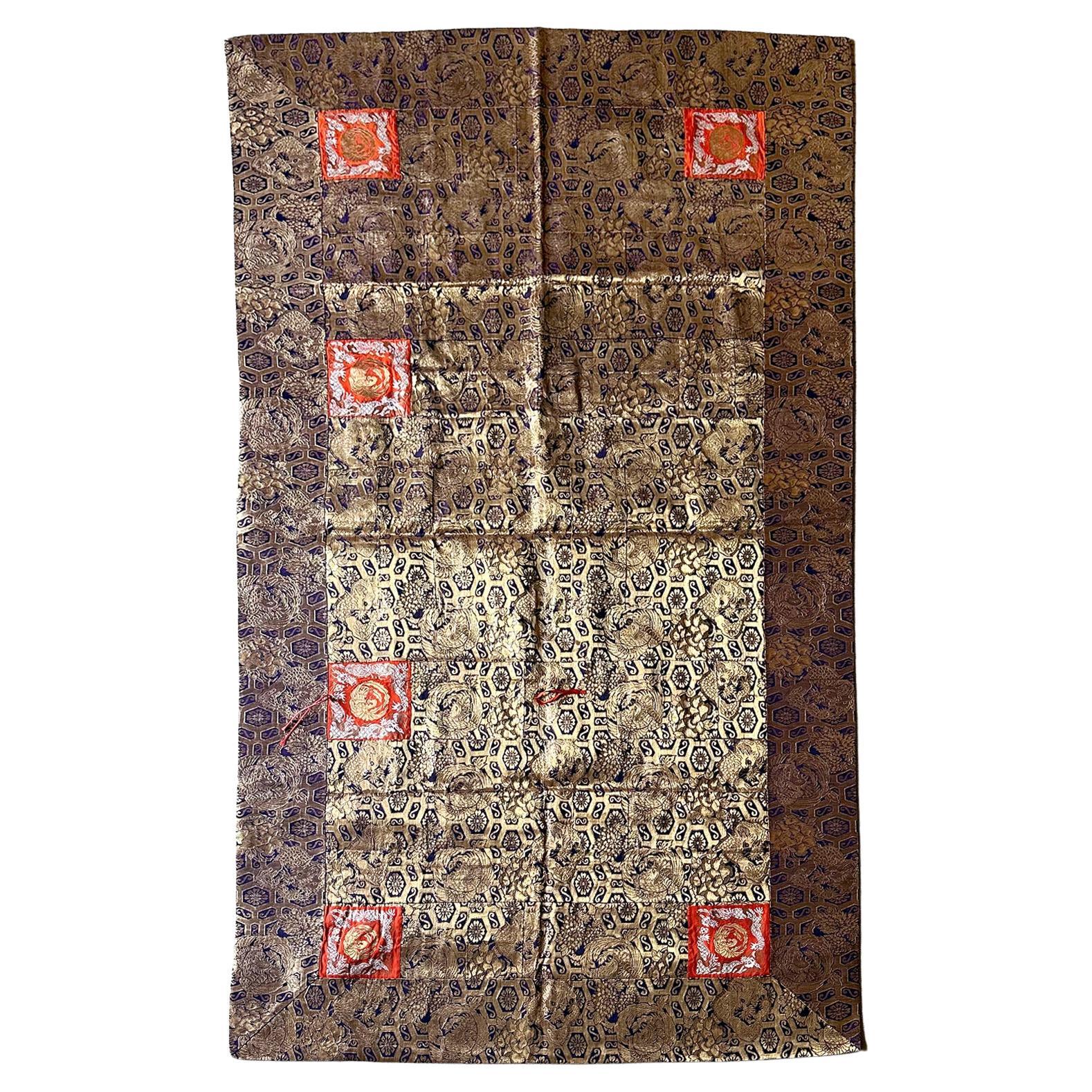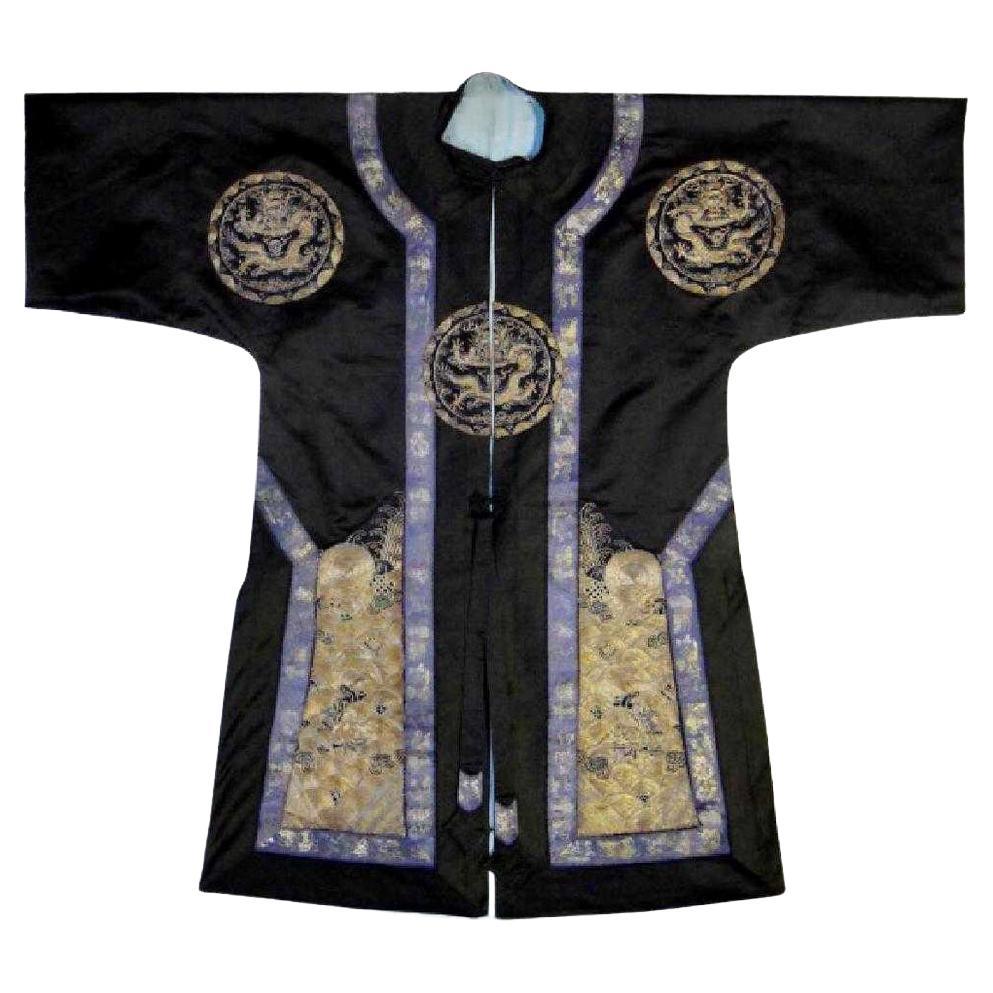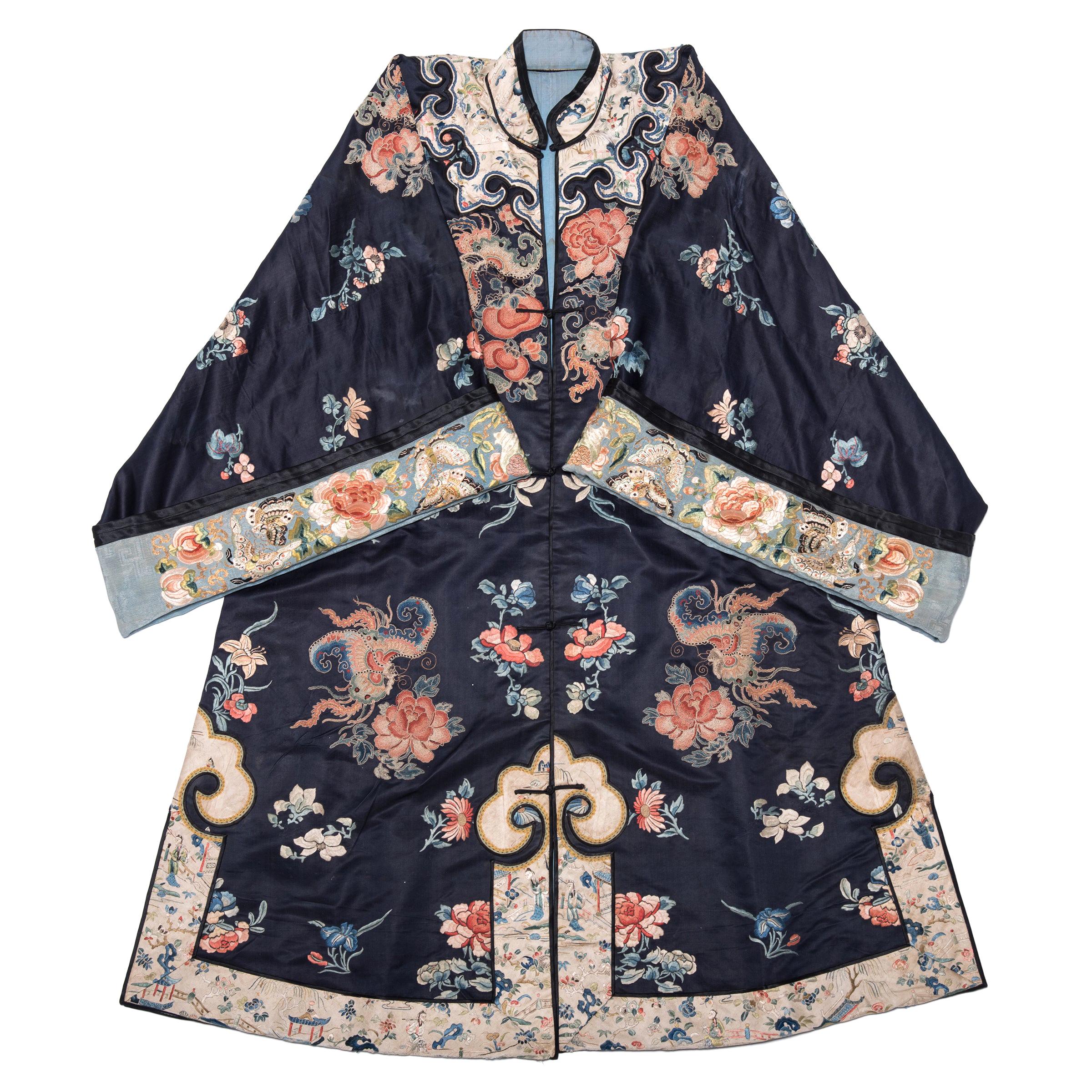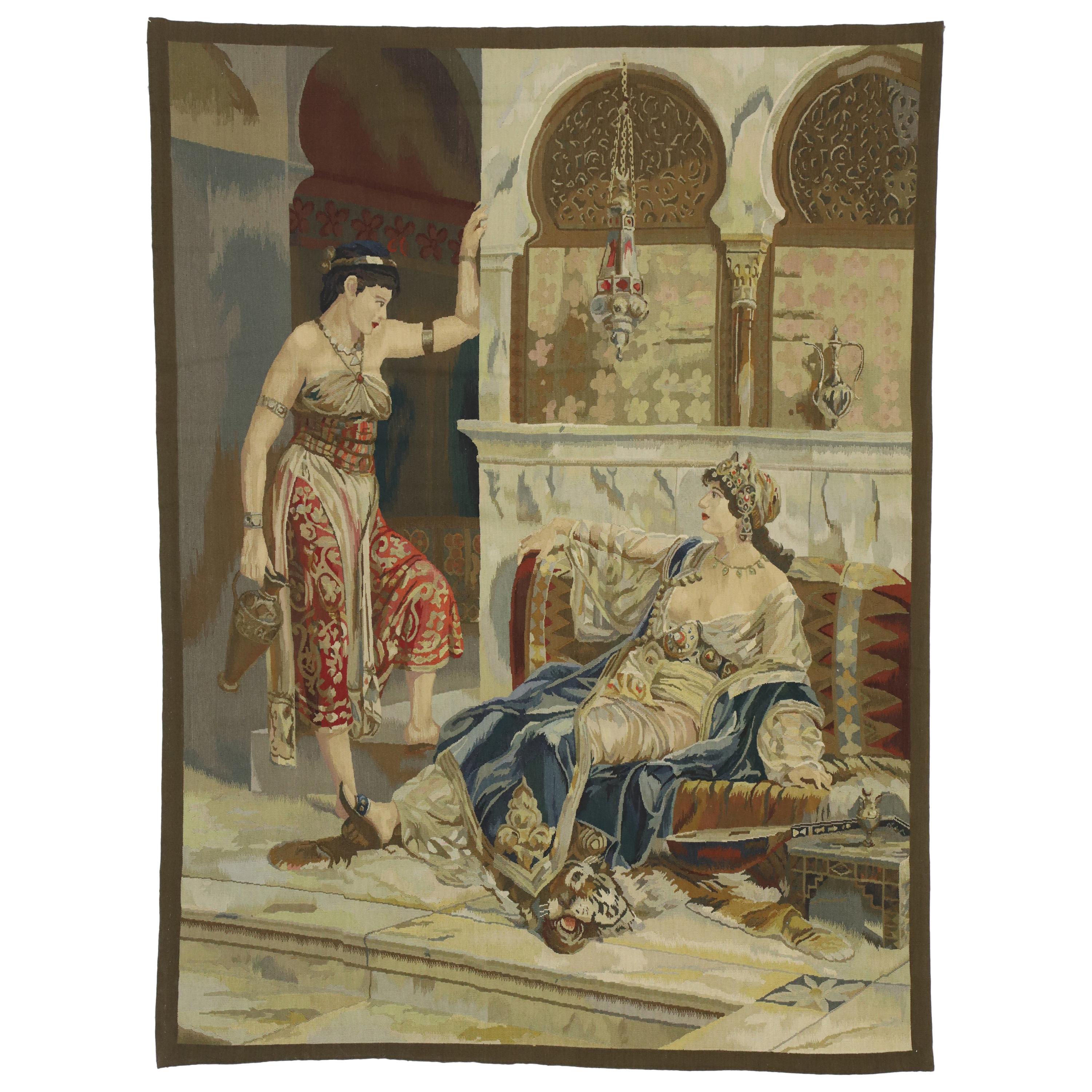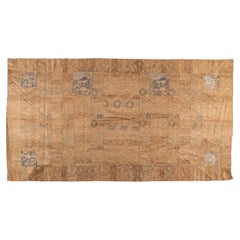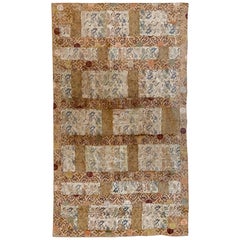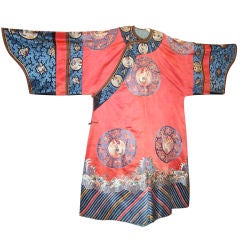
Imperial Period Funeral Robe
View Similar Items
1 of 3
Imperial Period Funeral Robe
About the Item
- Dimensions:Height: 55 in (139.7 cm)Width: 55 in (139.7 cm)
- Materials and Techniques:
- Place of Origin:
- Period:
- Date of Manufacture:1900's
- Condition:
- Seller Location:North Palm Beach, FL
- Reference Number:1stDibs: U110704904440
You May Also Like
- Antique Japanese Brocade Kesa Monk's Robe Edo PeriodLocated in Atlanta, GAA Japanese Kesa (Monk's Vestment) made from thirteen columns of patchworks of shimmering woven brocades. The elaborate motifs feature repetitive hibiscus flowers within framework of ...Category
Antique 19th Century Japanese Edo Textiles
MaterialsBrocade, Silk
- Antique Brocade Kesa Monk's Patched Robe Edo PeriodLocated in Atlanta, GAKesa, known as "Jiasha" in Chinese and "Kasaya" in Sanskrit, is an out layer garment worn by the ordained Buddhist monks. Bearing a basic rectangular form, it developed originally in...Category
Antique Late 18th Century Japanese Edo Textiles
MaterialsTextile, Brocade
- Antique Silk Kesa Monk's Patched Robe Meiji PeriodLocated in Atlanta, GAKesa, known as "Jiasha" in Chinese and "Kasaya" in Sanskrit, is an out-layer garment worn by the ordained Buddhist monks. Bearing a basic rectangular form, it developed originally in...Category
Antique 19th Century Japanese Meiji Textiles
MaterialsTextile, Brocade
- Antique Japanese Brocade Monk's Robe Kesa Meiji PeriodLocated in Atlanta, GAA Japanese Kesa (Monk's Vestment) made from thirteen columns of patchworks of shimmering woven brocades. The elaborate motifs feature repetitive elaborat...Category
Antique Late 19th Century Japanese Meiji Textiles
MaterialsBrocade, Silk
- Antique Japanese Brocade Kesa Monk's Robe Meiji PeriodLocated in Atlanta, GAA stunning Japanese Kesa (Monk's Vestment) made from thirteen columns of patchworks of shimmering woven brocades. The elaborate motifs feature repetitive...Category
Antique Late 19th Century Japanese Meiji Textiles
MaterialsBrocade, Silk
- Japanese Brocade Noh Costume Kimono Robe Meiji PeriodLocated in Atlanta, GAA Noh costume made from magnificent silk twill brocade woven with metallic gold threads circa 1930s. The robe is identified as "Atsuita", made for male actors in the Noh play. The luxuriant fabric has a deep blue background with golden interlocking hexagon pattern that resembles tortoise shells, the symbol of longevity. The motifs showcase three auspicious symbols in repetitive patterns: roundels of coiled dragon, phoenix and peony. The kimono robe...Category
20th Century Japanese Meiji Textiles
MaterialsBrocade, Silk
